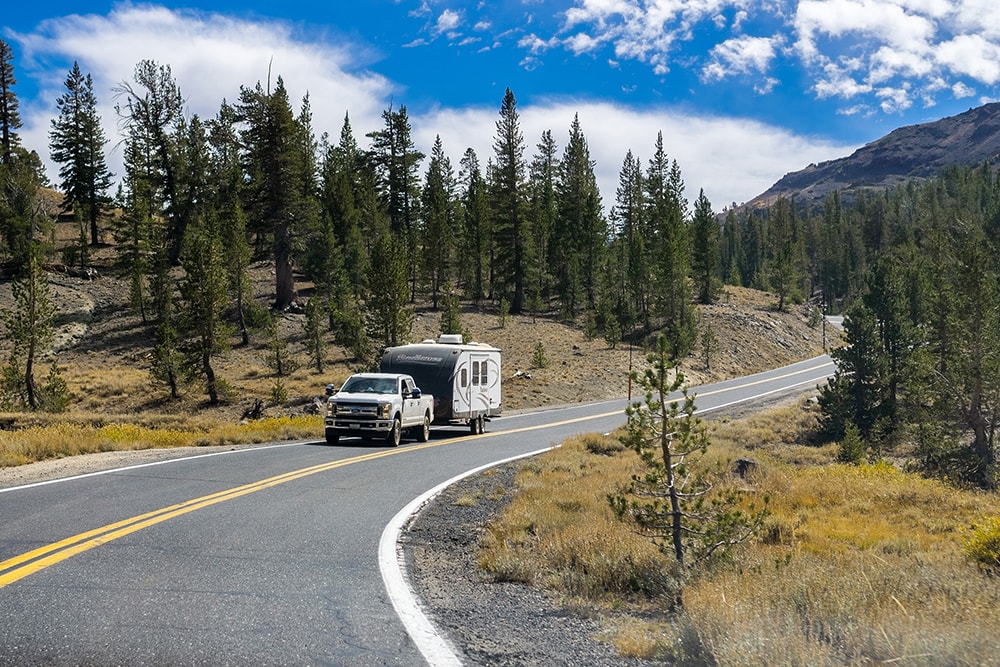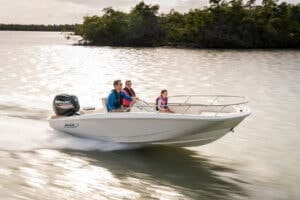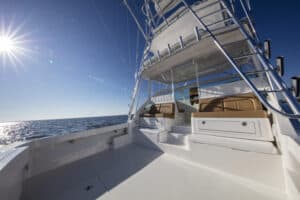An RV is a recreational vehicle and it comes in many different shapes, forms, and it is even known by different names depending on who you ask. It’s designed to have living quarters and space to accommodate your needs on the road. It can be used for short road trips, to eliminate the cost of hotels by staying inside, or used to explore the country for months at a time. It can be motorized or non-motorized. Motorized recreational vehicles typically fall into three categories: Classes A, B, and C. If you’re ready to secure financings, learn how we do RV loans at Trident Funding.
Class A recreational vehicles generally have six wheels and offer a full cabin for the driver and a front seat passenger, as well as a spacious interior that you can move around while on the road. You can also sleep in the interior in a separate space or in a fold out bed. Depending on the size and cost of the RV, you may find multiple sleeping areas, a small kitchen, a bathroom, lounge areas, and places to read and eat meals. These are the most expensive category of RVs and generally cost $70,000 for pre-owned vehicles to in the millions for a fully customized vehicle, like the ones touring musicians use.
If you want a stylish tricked-out Class A recreational vehicle but don’t want to pay for it with your hard earned cash, consider an RV loan. Trident Funding is a leading RV financing company that has relationships with dozens of banks and lenders so they can get you the best rate and the most personalized service. They have thirty years of experience in the RV space and the company finances both new and used RVs. You can check out a free online RV loan calculator, see current RV rates, and then apply for an RV loan online. Approvals are generally quick: within 24 to 48 hours.
If you’re looking for something more affordable, a Class B recreational vehicle is similar to a customized van. They’re often made from panel trucks or automotive vans. You can buy them already fixed up or you can get them personalized and retro fitted to your specific tastes and needs. They’re smaller than Class A vehicles, easier to drive, and more affordable in terms of up front costs, fuel costs, and maintenance and repairs. Expect to pay upwards of $40,000 for a new Class B recreational vehicle.
Class C recreational vehicles, also known as campers or motorhomes, look more like a truck with an overhang that can be used for sleeping quarters or extra storage. They may run on gasoline or diesel fuel and vary in length and style. They can be compact, full size, or super size. They’re a middle of the road choice when it comes to recreational vehicles, less expensive and smaller than Class A vehicles, but more expensive and larger than Class B vehicles. Expect to spend upwards of $60,000 for these types of recreational vehicles.
Non-motorized recreational vehicles are in a class of their own. They can be towed by an SUV or pickup truck and are often referred to as campers, fifth wheels, towable RVs and pop-ups. Horse trailers also fit into this category. These are ideal if you’re going to an RV park, going on a short trip, or want to be able to drive your car around town and then sleep in your camper or tow your horses to a big event. Trident Funding also finances these types of RVs. They have a network of lenders that offer RV loans with competitive rates and terms.
 RV Financing: What You Need to Know
RV Financing: What You Need to Know
Now you know that you want to purchase an RV and possibly even take it to a bucket list destination like The Grand Canyon, travel through Route 66, or drive up the beautiful California Coast, it’s time to figure out how to pay for this new toy.
RV loans are a specialty type of loan used to finance recreational vehicles. Similar to boat loans, they fall into the luxury category because they aren’t a necessity, but instead, they are a want. Generally, you use an RV not as your daily driver, but as an additional vehicle used for vacations and camping trips.
RV loans allow you to purchase an RV with a small down payment or sometimes no down payment at all. Trident Funding offers no down payment RV loan programs as well as make no loan payments for the first 45 days for qualified borrowers. You can purchase a new or used RV from a dealer or from a private seller and finance it. Fixed rate and simple interest loans are available. Loan amounts typically range from $10,000 to $2 million.
RV Loan Rates
Typical RV loan rates vary based on the borrower’s credit score, market conditions, the loan amount, and the borrower’s overall credit profile including payment history and income. The best RV loan rates are reserved for the most qualified borrowers with high credit scores, consistent employment, sufficient income, and low debt-to-income ratios.
As of March 2023, RV loan rates range from 6.74% to over 19%. Rates around 6.74% are for top tier borrowers with credit scores usually over 800. If your credit score is in the 700s, expect a rate over 6.99% and if your credit score is in the 600s, your rate will probably be from 9% to over 12%.
Keep in mind that lower rates are typically offered on higher loan amounts, such as loans over $500,000. However, you will need to meet income and possible own payment requirements to qualify for one of these larger loans.
Check out an RV loan payment calculator to see how much RV you can afford and what your approximate monthly payment will be. Once you find out what your approximate budget for an RV will be, then check current RV loan rates. This is a free online tool that is updated daily and can give you an approximate RV loan rate. These calculators will tell you how much your monthly payment will be in terms of principal and interest, however they don’t factor in any other costs. Make sure there’s room in the budget for RV insurance, maintenance costs, storage, and fuel.
RV Loan Terms
Now you know more about RV loans, rates, and how they work, you need to know how long your loan is for; this is referred to as the loan term or the term of the loan. A shorter loan term will come with higher monthly loan payments but you will get to pay the loan off more quickly so will eliminate some of the interest paid over the life of the loan.
A longer loan term will generate more total interest paid but it will give you a more affordable monthly payment. Longer loan terms make RV loans more affordable for most people. They’re also often offered on higher loan amounts. You will need to qualify for the best loan terms just like you need to qualify for the best loan rates. The better your credit score, lower your debt-to-income ratio, and the stronger your overall financial profile, the more flexible terms you will get to choose from. RV loan terms typically range from five years all the way up to 20 years.
What to Do and What Not to Do When Applying for an RV Loan
When you’re applying for an RV loan, just as is the case with any loan, it’s important to have all of your important documents organized and readily accessible. You want your credit cards to be paid off if possible and your credit score to be as high as possible before you apply. This will ensure you receive the best RV loan products, the most competitive rates, and the best terms.
You should always be honest on your RV loan application and make sure you understand all of the associated loan costs. Find out how much RV you can afford Before you begin shopping. This will help you stick to your budget, ensure you don’t waste time looking at vehicles you can’t afford, and you won’t fall in love with the features of a $1 million RV when your budget is more tailored to a $350,000 RV.
Don’t forget to budget for more than just the down payment, loan costs, and registration costs. Remember that you will need to insure your RV, store it somewhere, keep it clean, filled with gas, and it may need repairs and maintenance. You should always inspect your RV before any upcoming trips to see if you need an oil change, new tires, or anything else like a new faucet etc.
Another important thing is don’t make any major purchases during your RV loan process. Don’t buy that outdoor TV, stainless steel grill, or RV cover until after you purchase your RV. You don’t want to max out any credit cards or increase your debt-to-income ratio. In fact, if you do, your RV loan may be turned down.
Also, don’t make any major financial changes during the loan process. This includes things like quitting your job, selling your business, or changing careers. Keep everything the same as when you applied for the RV loan.
Pros and Cons of RV Loans
All loans come with their own advantages and disadvantages.
Pros of RV loans include:
- Less cash used upfront
- Can use that cash to invest or keep it for a rainy day
- Lender will help you navigate the RV purchase process
- Buying an RV is more affordable if you use an RV loan
- You have years to pay for the RV
Cons of RV loans include:
- Increase your debt-to-income ratio
- Interest and loan costs
- You need to qualify for the loan
- You will have to go through the application process and present any necessary paperwork
- More time consuming than buying an RV with cash





